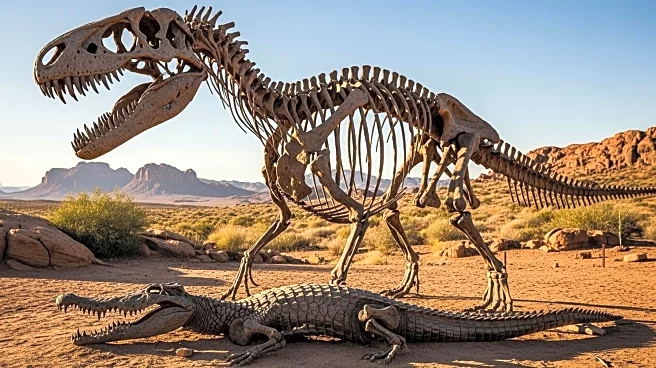What is the story about?
What's Happening?
Paleontologists have uncovered a new species of megaraptor, Joaquinraptor casali, in central Patagonia, believed to have been a top predator during the Late Cretaceous period. The discovery was made in the Lago Colhué Huapi Formation, where researchers found a well-preserved skull, limbs, ribs, and vertebrae. The dinosaur, estimated to be around 23 feet long and weighing over 2,200 pounds, was found with an ancient crocodile leg near its jaws, suggesting its dietary habits. The specimen's placement in geological layers indicates it lived 70 to 66 million years ago, making it one of the last known megaraptorans.
Why It's Important?
The discovery of Joaquinraptor casali provides significant insights into the megaraptoran family, which has been largely unknown due to fragmentary specimens. This finding helps paleontologists understand the evolutionary trajectory and dietary preferences of these large predators. The presence of crocodile remains suggests that megaraptorans were capable of hunting large prey, highlighting their role in the ecosystem as formidable predators. This contributes to the broader understanding of dinosaur biodiversity and ecological dynamics during the Late Cretaceous period.
What's Next?
Further analysis of the Joaquinraptor casali specimen and its surrounding fossils may reveal more about the megaraptoran family tree and their ecological interactions. Researchers may continue to explore the Lago Colhué Huapi Formation for additional specimens that could provide more comprehensive insights into the life and environment of these ancient creatures.
Beyond the Headlines
The discovery raises questions about the ethical considerations of fossil excavation and the preservation of paleontological sites. As researchers continue to uncover new species, there is a growing need to balance scientific exploration with the conservation of natural heritage.
AI Generated Content
Do you find this article useful?














